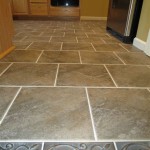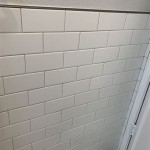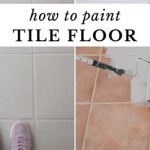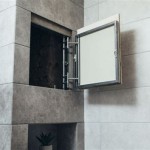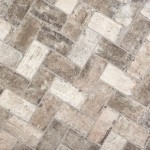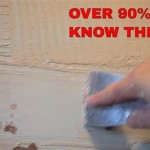How To Install Vinyl Flooring Over Asbestos Tile
The presence of asbestos-containing materials (ACM) in older homes presents a unique challenge for renovation projects. Asbestos tile, commonly used in flooring prior to the 1980s, is one such material. Disturbing asbestos-containing tile can release harmful fibers into the air, posing a significant health risk. Therefore, it is crucial to understand the appropriate methods for handling asbestos tile during flooring upgrades.
Installing vinyl flooring over existing asbestos tile is often considered a safer and more cost-effective alternative to asbestos removal. Encapsulation, the practice of sealing asbestos-containing material to prevent fiber release, is the principle behind this approach. When done correctly, installing new flooring over asbestos tile avoids disturbing the asbestos and mitigates the health risks associated with fiber release.
However, it is imperative to emphasize that this process is not without risk. Improper installation techniques or damage to the existing asbestos tile can compromise the encapsulation and lead to fiber release. Therefore, meticulous preparation, adherence to safety protocols, and a thorough understanding of the relevant regulations are vital.
This article provides a detailed guide on how to install vinyl flooring over asbestos tile safely and effectively. It will cover essential safety precautions, necessary materials and tools, surface preparation techniques, and step-by-step installation instructions. It is important to note that local regulations regarding asbestos abatement may vary, so consulting with a qualified asbestos professional and familiarizing oneself with local guidelines is essential before commencing any work.
Understanding the Risks and Regulations
Asbestos is a naturally occurring mineral that was widely used in building materials due to its heat resistance, strength, and insulating properties. However, prolonged exposure to airborne asbestos fibers can lead to serious health problems, including asbestosis (scarring of the lungs), lung cancer, and mesothelioma (a rare cancer affecting the lining of the lungs, abdomen, or heart).
The primary risk associated with asbestos tile is the release of fibers into the air when the tile is damaged or disturbed. This can occur during activities such as breaking, sanding, or removing the tile. Intact asbestos tile that is properly encapsulated poses a significantly lower risk.
Before undertaking any project involving asbestos-containing materials, it is crucial to understand the relevant regulations in your area. Many jurisdictions have specific requirements regarding asbestos testing, abatement, and disposal. Some areas may require licensed asbestos abatement professionals to perform any work involving asbestos-containing materials. Failure to comply with these regulations can result in significant fines and legal liabilities.
Consult with your local environmental protection agency or health department to determine the specific regulations in your area. It is also advisable to hire a qualified asbestos inspector to test the tile and confirm the presence of asbestos. A professional inspector can also provide guidance on the appropriate course of action and ensure compliance with all applicable regulations. This testing is crucial because not all older tiles contain asbestos, and knowing for sure will determine the necessary precautions.
Furthermore, informing your insurance company about the presence of asbestos and the intended encapsulation procedure is essential. This ensures that your insurance policy provides adequate coverage in case of any unforeseen issues during or after the installation.
Preparing the Surface and Ensuring Safety
Proper surface preparation is essential for a successful vinyl flooring installation over asbestos tile. The goal is to create a smooth, stable, and clean surface that will provide a solid foundation for the new flooring. Neglecting this step can lead to unevenness, bonding issues, and ultimately, a compromised installation.
Begin by thoroughly cleaning the existing asbestos tile. Use a mild detergent and water to remove any dirt, debris, or residue. Avoid using harsh chemicals or abrasive cleaners, as these can damage the tile and potentially release asbestos fibers. Rinse the surface thoroughly with clean water and allow it to dry completely. Inspect each tile carefully for damage like cracks or breaks. Any damaged tiles need to be repaired before proceeding.
Next, address any unevenness or damage to the existing tile floor. Small cracks and chips can be repaired with a patching compound specifically designed for use with asbestos-containing materials. Apply the patching compound according to the manufacturer's instructions and allow it to dry completely. For larger areas of damage or unevenness, consider using a self-leveling underlayment. This will create a smooth, even surface that is ideal for vinyl flooring installation. Ensure the self-leveling underlayment is compatible with asbestos tile and follow the manufacturer's instructions carefully.
Before you start working, make sure you have all the necessary safety equipment: a properly fitted respirator (N-100 or P-100 rating is recommended), disposable coveralls, gloves, and safety glasses. Seal off the work area with plastic sheeting and duct tape to prevent asbestos fibers from spreading to other parts of the house. Keep pets and children away from the work area.
Maintain good ventilation in the work area by opening windows and using a fan to circulate air. However, avoid creating drafts that could stir up asbestos fibers. Wetting the asbestos tile with water can help to suppress the release of fibers during the preparation process. Use a spray bottle to lightly mist the tile before and during any cutting or patching.
When patching or using a self-leveling underlayment, ensure that the product is specifically designed for use over asbestos-containing materials. This will ensure that it bonds properly to the tile and provides a durable, long-lasting surface. Apply the product according to the manufacturer’s instructions, paying close attention to the recommended thickness and drying time.
Finally, after completing the surface preparation, thoroughly clean the work area using a HEPA vacuum cleaner. This type of vacuum cleaner is specifically designed to capture microscopic particles, including asbestos fibers. Dispose of the vacuum bag and any disposable materials (coveralls, gloves, etc.) according to local regulations for asbestos waste disposal. Do not sweep or dust the area, as this can stir up asbestos fibers.
Installing the Vinyl Flooring
With the surface properly prepared and all necessary safety precautions in place, you can now proceed with the installation of the vinyl flooring. The specific installation method will depend on the type of vinyl flooring you have chosen (e.g., sheet vinyl, vinyl planks, or vinyl tiles). Always refer to the manufacturer's instructions for the specific product you are using.
For sheet vinyl flooring, carefully measure the room and cut the vinyl sheet to the appropriate size, leaving a slight overlap around the perimeter. Unroll the vinyl sheet and position it in the room, carefully aligning it with the walls. Use a utility knife to trim the excess vinyl along the edges, leaving a small gap for expansion.
Adhere the sheet vinyl to the prepared subfloor using a recommended adhesive. Spread the adhesive evenly over the entire surface using a notched trowel, following the manufacturer's instructions for the proper adhesive type and application rate. Carefully position the vinyl sheet over the adhesive and use a roller to press it firmly into place, ensuring good contact and eliminating any air bubbles. Allow the adhesive to dry completely before walking on the new floor.
For vinyl planks or tiles, start by establishing a layout line in the center of the room. This will help ensure that the planks or tiles are installed straight and evenly. Apply adhesive to the back of each plank or tile, or use a self-adhesive product. Carefully position each plank or tile along the layout line, pressing it firmly into place. Use spacers to maintain consistent gaps between the planks or tiles, if required by the manufacturer.
When cutting vinyl planks or tiles to fit around obstacles or along the walls, use a utility knife and a straightedge. Score the vinyl deeply and then snap it along the score line. This will ensure a clean, accurate cut. Remember to dispose of all waste materials according to local regulations for asbestos waste disposal.
After installing the vinyl flooring, install baseboards or other trim along the perimeter of the room to cover the expansion gap and provide a finished look. This trim also serves as an additional barrier, further encapsulating the asbestos tiles underneath. Ensure that the trim is securely fastened to the wall and that it provides a tight seal along the floor.
Following the installation, clean the new vinyl flooring with a damp cloth and a mild detergent. Avoid using harsh chemicals or abrasive cleaners, as these can damage the vinyl surface. Regular cleaning and maintenance will help to keep your new floor looking its best for years to come.
Remember that this method is an encapsulation technique not a removal technique. Therefore, it is important to avoid any future damages. If the vinyl floor is damaged, repair it immediately. If you plan to remove the vinyl flooring in the future, treat the project like you are working with asbestos again and follow all aforementioned safety procedures or hire a professional.

Can I Put A New Floor Over Asbestos Tiles Branch Environmental

How To Install Tile Over Asbestos Ehow

Installing Hardwood Over Asbestos Tiles Homeadvisor

How To Seal Asbestos Tiles Hunker

The Truth About Asbestos Vinyl Flooring Chemcare

Asbestos Floor Tiles 101 What To Know About This Old Home Hazard Bob Vila

How To Waterproof A Basement

Do You Have Vinyl Asbestos Floor Tiles

How Can I Easily Safely And Ly Cover Asbestos Flooring

Let S Play A Game Called Are These Asbestos Tiles That I Just Removed Addicted 2 Decorating
Related Posts

